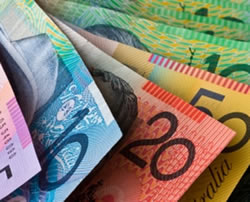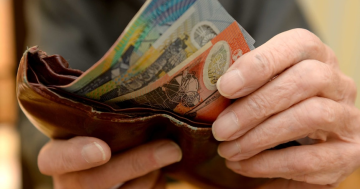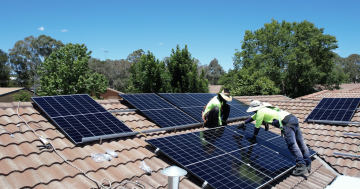Eliza Bavin* has advice for people wanting to save more money for a rainy day.
 Aussies are madly saving money to stave off the rising cost of living, according to new research by Finder.
Aussies are madly saving money to stave off the rising cost of living, according to new research by Finder.
The average Australian had $39,439 in savings in August, according to Finder’s Consumer Sentiment Tracker.
That’s a 75 per cent increase from six months earlier – up from $22,565 in March – and a record high since Finder began tracking in May 2019.
The amount of savings Aussies have stashed away has been trending up after four successive cash rate rises from the Reserve Bank of Australia (RBA).
Money expert at Finder Sarah Megginson said cash was king in a downturn.
“Australians are drastically increasing how much cash they have stashed to offset the spiralling cost of living,” Megginson said.
“Consumers are concerned that high levels of inflation and increasing interest rates will leave them vulnerable and, where possible, they’re stockpiling cash to weather the storm.”
The research found men had much bigger cash reserves than women.
The average woman had $26,132 saved in August compared to $52,786 for men.
Megginson said boosting savings was a good goal to strive towards.
“Saving a little is better than saving nothing – the habit of saving is most important of all,” she said.
“Now is a great time to have excess cash in the bank with high interest savings accounts offering rates of more than 3.10 per cent a year, and term deposits are even higher.
“While the RBA lifting the cash rate to 1.85 per cent is bad news for borrowers, it’s good news for savers.”
Finder research shows the average Aussie could afford to live off their savings for 19 weeks if they lost their job today – up from 14 weeks in March.
How to start an emergency fund
There are a few ways to get on top of your finances to start a savings fund, even if you are feeling stretched.
Firstly, start by making a budget.
The simplest way to know what money you have coming in and what you have going out is by using the Government’s MoneySmart budget planner tool.
It is free to use and allows you to input everything you earn and spend.
Once you have a good idea about where you stand right now you can look at where you might want to make some cuts.
Think about subscriptions you don’t use regularly, or look into getting a better deal on your electricity, gas, phone or internet.
If you can find places to make some cuts, you can start putting that money aside into a long-term savings account.
If you can put aside even just 10 per cent of your pay it will start to add up.
Six savings accounts now paying 3 per cent interest (or more):
- Westpac Life (18-29 years): 3.25 per cent p.a.
- BoQ Future Saver (14-35 years): 3.5 per cent p.a.
- ING Savings Maximiser: 3.10 per cent p.a.
- Macquarie Savings Account: 3.10 per cent p.a.
- Rabo High Interest Savings Account: 3.10 per cent p.a.
- Virgin Money Boost Saver: 3.10 per cent p.a.
*Eliza Bavin, Personal Finance Editor, is a senior journalist focusing on economics, personal finance and company news amongst other things.
This article first appeared at au.finance.yahoo.com.











